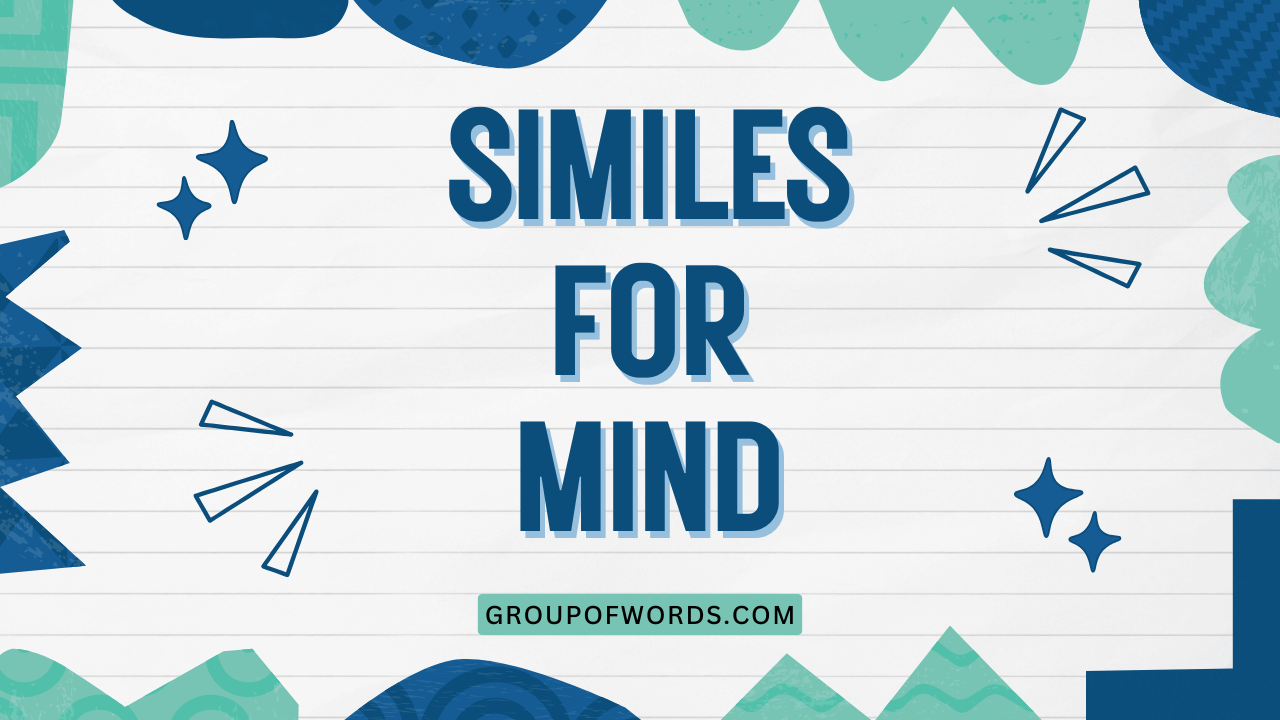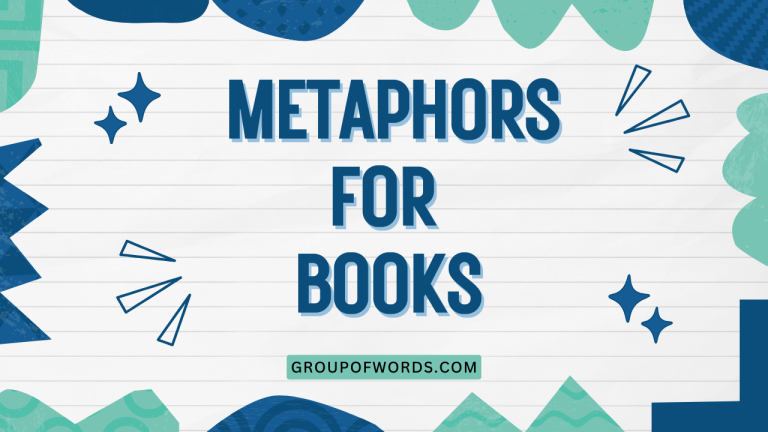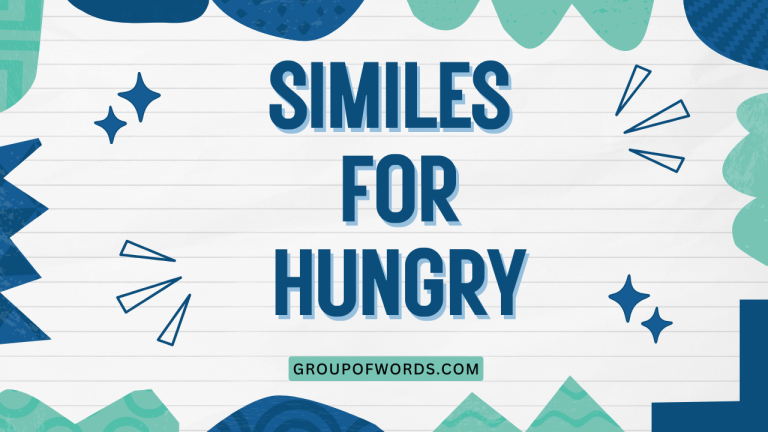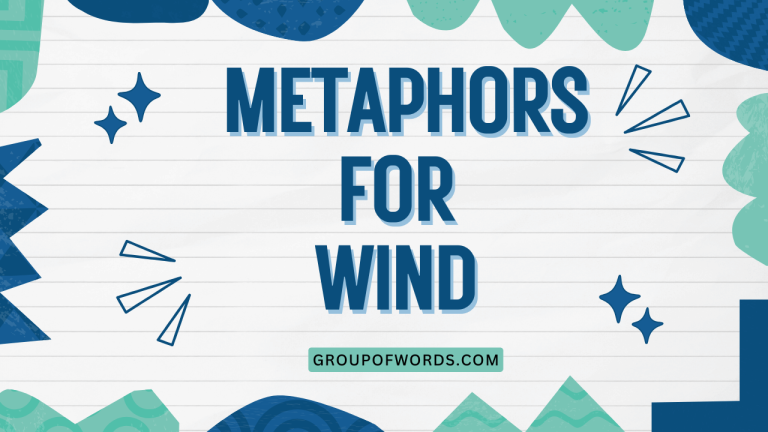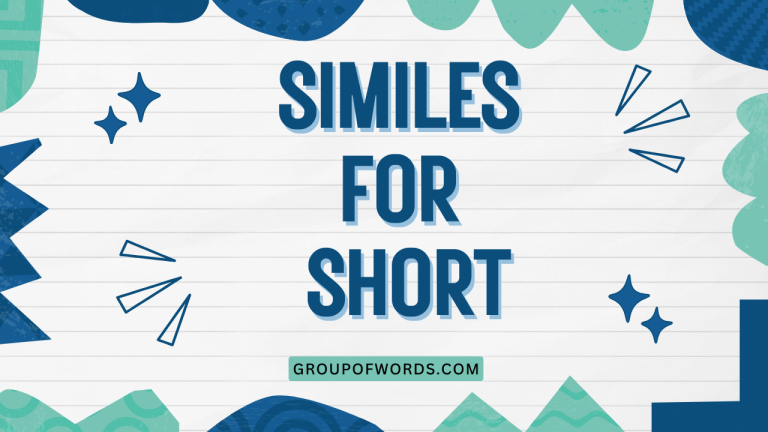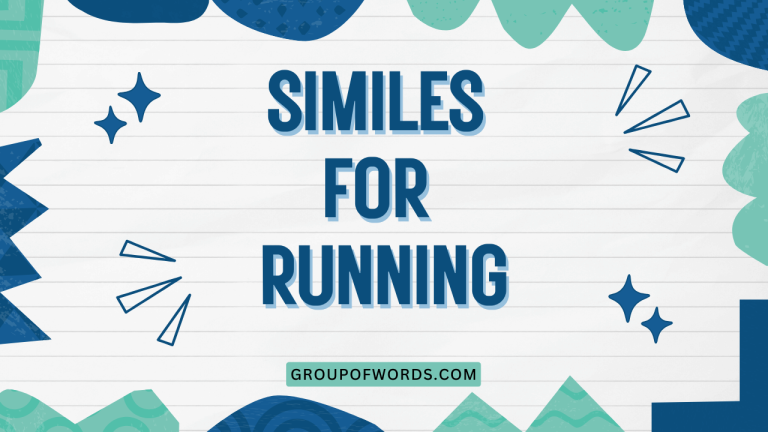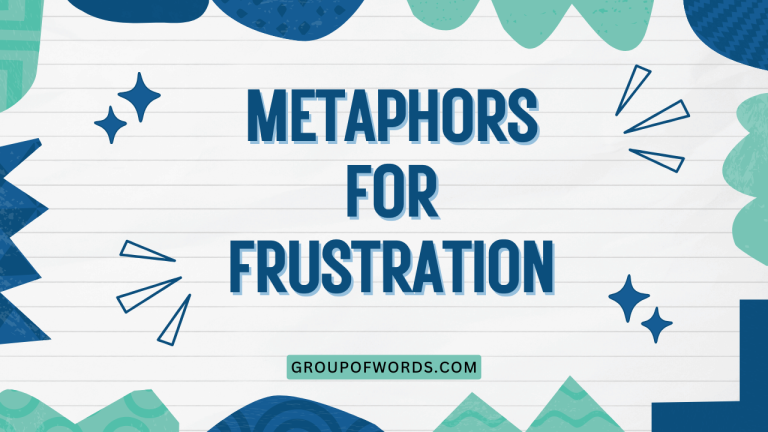Similes for Mind: Enhancing Language with Figurative Comparisons
Understanding similes is crucial for mastering figurative language and enhancing communication skills. Similes allow us to express complex ideas by drawing comparisons between seemingly unrelated things, making our language more vivid and engaging.
This article delves into the world of similes specifically related to the mind, exploring their structure, usage, and impact on expression. Anyone looking to improve their writing, comprehension, or creative expression will benefit from this comprehensive guide.
Table of Contents
- Introduction
- Definition of Simile
- Structural Breakdown of Similes
- Types of Similes
- Examples of Similes for Mind
- Usage Rules for Similes
- Common Mistakes with Similes
- Practice Exercises
- Advanced Topics in Similes
- Frequently Asked Questions
- Conclusion
Introduction
Similes are powerful tools in the English language, allowing us to paint vivid pictures with words and create memorable comparisons. By using “like” or “as,” we can connect abstract concepts to more concrete images, making our communication more engaging and understandable.
This article focuses on similes that relate to the mind, exploring how we can use them to describe thoughts, intelligence, and mental states in creative and impactful ways. Whether you’re a student, writer, or simply someone interested in language, this guide will provide a deeper understanding of similes and their application.
Definition of Simile
A simile is a figure of speech that directly compares two different things, explicitly using the words “like” or “as.” It’s a way to create a more vivid and descriptive image by associating the characteristics of one thing with another. Similes are essential for adding color, depth, and clarity to writing and speech, making abstract ideas more relatable and understandable.
The primary function of a simile is to enhance understanding and create a stronger impact on the audience. By drawing a comparison, a simile helps to illuminate a particular quality or characteristic of the subject being described.
This makes the description more memorable and engaging, as it appeals to the reader’s or listener’s imagination.
Similes are commonly found in literature, poetry, everyday conversation, and advertising. They are used to simplify complex ideas, evoke emotions, and create a more engaging reading or listening experience.
The effectiveness of a simile depends on the relevance and clarity of the comparison, ensuring that the connection between the two things being compared is easily understood.
Structural Breakdown of Similes
Understanding the structure of a simile is crucial for crafting effective comparisons. A typical simile consists of three main elements: the subject, the linking word (“like” or “as”), and the object of comparison.
Each element plays a vital role in creating a clear and impactful comparison.
The subject is the thing being described. It is the focus of the simile and the element whose characteristics are being highlighted. The linking word, either “like” or “as,” establishes the direct comparison between the subject and the object. This word signals to the reader or listener that a simile is being used. The object of comparison is the thing to which the subject is being compared. It provides a reference point that helps to illuminate a particular aspect of the subject.
Let’s break down an example: “Her mind was like a steel trap.” In this simile, “her mind” is the subject, “like” is the linking word, and “a steel trap” is the object of comparison. The simile suggests that her mind is sharp, quick, and capable of holding onto information, similar to how a steel trap captures its prey.
The effectiveness of a simile depends on the clarity and relevance of the comparison. The object of comparison should have a characteristic that is easily associated with the subject, creating a clear and understandable connection.
A well-constructed simile can significantly enhance the descriptive power of language.
Types of Similes
Similes can be categorized based on the type of comparison they make and the effect they create. Understanding these different types can help you choose the most appropriate simile for a given context and achieve the desired impact.
Descriptive Similes
Descriptive similes focus on illustrating specific qualities or characteristics of the subject. They aim to paint a vivid picture by comparing the subject to something that shares similar attributes.
For example, “His mind was as sharp as a razor” is a descriptive simile that highlights the sharpness and precision of his intellect.
Explanatory Similes
Explanatory similes are used to clarify or explain a concept by comparing it to something more familiar. They help to make abstract ideas more understandable by relating them to concrete examples.
For instance, “Understanding quantum physics is like trying to nail jelly to a tree” explains the difficulty of the subject by comparing it to a challenging physical task.
Exaggerative Similes
Exaggerative similes use hyperbole to emphasize a particular trait or quality. They create a humorous or dramatic effect by comparing the subject to something that is significantly larger or more extreme.
For example, “His mind was as vast as the universe” exaggerates the extent of his knowledge or imagination.
Ironic Similes
Ironic similes use comparisons that are contrary to the actual situation, often for humorous or satirical effect. They create a sense of incongruity by comparing the subject to something that is the opposite of what is expected.
For instance, describing a disorganized mind as “as orderly as a perfectly arranged library” would be an ironic simile.
Examples of Similes for Mind
This section provides a comprehensive collection of similes related to the mind, categorized for easier understanding and application. Each category focuses on different aspects of the mind, such as intelligence, clarity, confusion, and creativity.
Similes for Intelligence
These similes illustrate the sharpness, quickness, and depth of intelligence. They often compare the mind to objects or concepts associated with precision and knowledge.
The table below shows the similes for intelligence.
| Simile | Explanation |
|---|---|
| Her mind was like a steel trap. | Suggests a sharp, quick, and retentive mind. |
| His intellect was as sharp as a razor. | Implies a keen and precise intellect. |
| Her brain worked like a well-oiled machine. | Indicates efficiency and smooth cognitive function. |
| His mind was as quick as lightning. | Suggests rapid thinking and problem-solving abilities. |
| Her thoughts were like a finely tuned instrument. | Implies precision and accuracy in her thinking. |
| His understanding was as deep as the ocean. | Suggests profound knowledge and insight. |
| Her mind was like an encyclopedia. | Indicates a vast store of knowledge. |
| His memory was as clear as a bell. | Implies a sharp and accurate recollection of events. |
| Her wit was as quick as a whip. | Suggests a sharp and incisive sense of humor. |
| His brain was like a supercomputer. | Indicates exceptional processing power and analytical skills. |
| Her mind was as analytical as a detective’s. | Implies a methodical and detail-oriented approach. |
| His reasoning was as logical as a mathematical proof. | Suggests a clear and structured thought process. |
| Her intellect shone like a beacon. | Indicates a bright and illuminating mind. |
| His mind was as astute as a seasoned investor. | Implies shrewdness and perceptive judgment. |
| Her knowledge was as extensive as a library’s collection. | Indicates a vast and comprehensive understanding. |
| His mind was like a sponge, absorbing information. | Suggests a capacity to learn and retain knowledge easily. |
| Her intelligence was as boundless as the sky. | Implies limitless potential and understanding. |
| His mind was as sharp as a tack. | Suggests quick wit and intelligence. |
| Her mental acuity was like a laser beam. | Indicates focused and precise thinking. |
| His brain functions like a well-organized filing system. | Implies structured and efficient thought processes. |
| Her mind was as sharp as a surgeon’s scalpel. | Indicates precision, accuracy, and intellectual expertise. |
| His understanding was as thorough as a scientific study. | Suggests deep and comprehensive knowledge. |
| Her mind was like a steel vault, securely holding information. | Implies a strong memory and the ability to protect sensitive information. |
| His intellect was as keen as an eagle’s eye. | Suggests sharp observation and insight. |
| Her mind was as quick as a hummingbird’s wings. | Indicates rapid thinking and adaptability. |
Similes for Clarity of Mind
These similes describe a mind that is clear, focused, and free from confusion. They often use images of light, transparency, and order to convey a sense of mental clarity.
The table below shows similes for clarity of mind.
| Simile | Explanation |
|---|---|
| Her thoughts were as clear as a crystal stream. | Suggests a pure and unobstructed thought process. |
| His mind was like a still lake, reflecting everything perfectly. | Implies calmness and clarity in his thinking. |
| Her focus was as sharp as a laser beam. | Indicates intense concentration and clarity of purpose. |
| His understanding was as clear as day. | Suggests complete and unambiguous comprehension. |
| Her mind was like a clean slate. | Implies a fresh start and freedom from preconceptions. |
| His thoughts were as organized as a well-structured plan. | Indicates a methodical and orderly mind. |
| Her vision was as clear as a hawk’s eye. | Implies sharp perception and clarity of perspective. |
| His mind was like a polished mirror, reflecting truth. | Suggests honesty and clarity in his thoughts. |
| Her thoughts were as transparent as glass. | Indicates openness and honesty in her thinking. |
| His mind was like a well-lit room, free from shadows. | Implies clarity and understanding in his thoughts. |
| Her ideas were as clear as a mountain spring. | Suggests purity and clarity in her thoughts. |
| His mind was as focused as a magnifying glass on a sunny day. | Indicates intense concentration and clarity. |
| Her thoughts were as defined as a blueprint. | Suggests precision and well-defined ideas. |
| His mind was like a calm sea, undisturbed by waves. | Implies peaceful and clear thinking. |
| Her understanding was as lucid as a dream. | Suggests clarity and insight. |
| His mind was like a window, allowing light to pass through. | Implies openness and receptiveness to new ideas. |
| Her thoughts were as precise as a surgeon’s cut. | Indicates accuracy and clarity in her thinking. |
| His mind was as clear as a cloudless sky. | Suggests freedom from confusion and clarity of thought. |
| Her understanding was as bright as the sun. | Implies complete and illuminating comprehension. |
| His mind was like a compass, always pointing to the truth. | Suggests a clear sense of direction and purpose. |
| Her thoughts were as orderly as a librarian’s catalog. | Indicates structured and efficient thinking. |
| His mind was as clear as a perfectly cut diamond. | Implies brilliance, precision, and clarity. |
| Her understanding was as transparent as pure water. | Suggests honesty, clarity, and purity of thought. |
| His mind was like a clear lens, focusing on the essential details. | Implies sharp focus and the ability to discern important information. |
Similes for Confusion of Mind
These similes describe a mind that is confused, disorganized, or overwhelmed. They often use images of chaos, darkness, and disorder to convey a sense of mental disarray.
The table below shows similes for confusion of mind.
| Simile | Explanation |
|---|---|
| His thoughts were like a tangled web. | Suggests confusion and difficulty in understanding. |
| Her mind was as foggy as a misty morning. | Implies unclear and obscured thinking. |
| His ideas were like a jumbled puzzle. | Indicates a lack of coherence and organization. |
| Her thoughts were as scattered as leaves in the wind. | Suggests a lack of focus and direction. |
| His mind was like a room full of clutter. | Implies disorganization and mental chaos. |
| Her thoughts were as muddled as a muddy stream. | Indicates unclear and confused thinking. |
| His mind was like a broken record, repeating the same thought. | Suggests obsession or inability to move on. |
| Her thoughts were as chaotic as a storm. | Implies turmoil and lack of control. |
| His mind was like a maze, full of dead ends. | Suggests confusion and difficulty in finding a solution. |
| Her thoughts were as unclear as a blurry photograph. | Indicates a lack of clarity and definition. |
| His mind was like a broken compass, pointing in every direction. | Suggests a lack of direction and purpose. |
| Her thoughts were as disoriented as a traveler in a foreign land. | Implies confusion and unfamiliarity. |
| His mind was like a scrambled egg, mixed up and incoherent. | Suggests a lack of organization and clarity. |
| Her thoughts were as hazy as a summer afternoon. | Indicates a lack of clarity and focus. |
| His mind was like a tangled ball of yarn, impossible to unravel. | Suggests complexity and confusion. |
| Her thoughts were as unclear as a dream. | Implies vagueness and lack of clarity. |
| His mind was like a crowded marketplace, full of noise and confusion. | Suggests overwhelming stimuli and lack of focus. |
| Her thoughts were as jumbled as a box of mismatched socks. | Indicates disorganization and lack of coherence. |
| His mind was like a broken radio, filled with static and interference. | Suggests difficulty in understanding and focusing. |
| Her thoughts were as scattered as seeds blown by the wind. | Implies a lack of focus and direction. |
| His mind was like a labyrinth, full of twists and turns. | Suggests complexity and difficulty in finding a solution. |
| Her thoughts were as murky as a polluted river. | Indicates unclear and contaminated thinking. |
| His mind was like a room with all the lights turned off. | Suggests a lack of clarity and understanding. |
| Her thoughts were as disorganized as a teenager’s bedroom. | Implies chaos and lack of structure. |
Similes for Creativity of Mind
These similes describe a mind that is creative, imaginative, and innovative. They often use images of art, nature, and invention to convey a sense of originality and inspiration.
The table below shows similes for creativity of mind.
| Simile | Explanation |
|---|---|
| Her imagination was like a boundless canvas. | Suggests limitless creative potential. |
| His mind was as fertile as a blooming garden. | Implies a capacity for growth and innovation. |
| Her ideas were like sparks, igniting new possibilities. | Indicates inspiration and the creation of new concepts. |
| His creativity was as fluid as a flowing river. | Suggests a continuous and effortless flow of ideas. |
| Her mind was like a kaleidoscope, constantly creating new patterns. | Implies innovation and the ability to see things from different perspectives. |
| His imagination was as vibrant as a rainbow. | Indicates a rich and colorful inner world. |
| Her ideas were like stars, shining brightly in the night sky. | Suggests inspiration and brilliance. |
| His mind was like a workshop, constantly creating new inventions. | Implies innovation and a capacity for problem-solving. |
| Her creativity was as boundless as the universe. | Indicates limitless potential for innovation. |
| His imagination was as vivid as a dream. | Suggests a rich and imaginative inner life. |
| Her ideas were like seeds, waiting to be planted and grown. | Implies potential for growth and development. |
| His mind was like a painter’s palette, full of colors and possibilities. | Suggests creativity and artistic expression. |
| Her creativity was as free as a bird in flight. | Indicates freedom of thought and expression. |
| His imagination was as boundless as the ocean. | Suggests limitless creative potential. |
| Her ideas were like music, filling the air with beauty and harmony. | Implies creativity and artistic expression. |
| His mind was like a bubbling cauldron of ideas. | Suggests a constant flow of creative thoughts. |
| Her creativity was as original as a snowflake. | Indicates uniqueness and individuality. |
| His imagination was as fertile as the Amazon rainforest. | Suggests a rich and abundant source of creative ideas. |
| Her ideas were like fireworks, exploding with brilliance and color. | Implies innovation and excitement. |
| His mind was like a composer’s studio, full of melodies and harmonies. | Suggests creativity and artistic expression. |
| Her creativity was as innovative as a groundbreaking invention. | Indicates originality and a capacity for innovation. |
| His imagination was as vast as a writer’s story. | Suggests limitless creative potential. |
Usage Rules for Similes
To use similes effectively, it’s essential to follow certain rules and guidelines. These rules ensure that your similes are clear, relevant, and impactful.
1. Use “like” or “as”: The most fundamental rule is to include either “like” or “as” to explicitly signal a comparison. Without these words, the comparison may not be recognized as a simile.
2. Compare dissimilar things: A simile should connect two things that are different enough to make the comparison interesting and insightful. Comparing similar things doesn’t create a strong or memorable image.
3. Ensure the comparison is clear: The connection between the two things being compared should be easily understood. The shared characteristic should be evident to the reader or listener.
4. Avoid clichés: Overused similes, such as “as busy as a bee” or “as strong as an ox,” can sound unoriginal and lack impact. Strive to create fresh and unique comparisons.
5. Be mindful of context: The appropriateness of a simile depends on the context in which it is used. Consider the audience, tone, and purpose of your writing or speech.
6. Don’t overdo it: While similes can enhance your language, using too many in a short space can make your writing feel cluttered and artificial. Use them sparingly and strategically.
7. Maintain consistency: Ensure that the simile aligns with the overall tone and style of your writing. Avoid using similes that clash with the rest of your text.
8. Be specific: The more specific your comparison, the more vivid and impactful it will be. Instead of saying “His mind was like a tool,” try “His mind was like a Swiss Army knife, capable of handling any problem.”
Common Mistakes with Similes
Even experienced writers and speakers can make mistakes when using similes. Recognizing these common errors can help you avoid them and improve the quality of your comparisons.
Using Metaphors Instead of Similes
One frequent mistake is confusing similes with metaphors. While both are figures of speech that make comparisons, similes use “like” or “as,” while metaphors directly state that one thing *is* another.
For example:
- Incorrect (Metaphor): His mind was a steel trap.
- Correct (Simile): His mind was like a steel trap.
Creating Unclear Comparisons
A simile should create a clear and understandable connection between the two things being compared. If the comparison is too vague or obscure, it won’t be effective.
For example:
- Incorrect: Her mind was like a thing.
- Correct: Her mind was as sharp as a tack.
Using Clichéd Similes
Overused similes can sound unoriginal and lack impact. Avoid using common expressions and strive to create fresh and unique comparisons.
For example:
- Incorrect: His mind was as sharp as a knife.
- Correct: His mind was as sharp as a surgeon’s scalpel.
Using Too Many Similes
While similes can enhance your language, using too many in a short space can make your writing feel cluttered and artificial. Use them sparingly and strategically.
For example:
- Incorrect: His mind was like a computer, processing information as quickly as lightning, with a memory as vast as the ocean.
- Correct: His mind was like a supercomputer.
Inconsistent Tone
The simile should align with the overall tone and style of your writing. Avoid using similes that clash with the rest of your text.
For example:
- Incorrect: In a serious academic paper: “His mind was like, totally awesome, dude!”
- Correct: In a serious academic paper: “His mind was as analytical as a seasoned researcher.”
Practice Exercises
Test your understanding of similes with these practice exercises. Each exercise focuses on different aspects of simile usage, from identifying similes to creating your own.
Exercise 1: Identifying Similes
Identify the similes in the following sentences. Write down the simile and explain what two things are being compared.
If a sentence does not contain a simile, write “No Simile.”
| Question | Answer |
|---|---|
| 1. Her mind was as clear as a mountain stream. | Simile: “as clear as a mountain stream.” Comparison: Her mind and a mountain stream. |
| 2. The sun shone brightly in the sky. | No Simile |
| 3. His thoughts were like a tangled web. | Simile: “like a tangled web.” Comparison: His thoughts and a tangled web. |
| 4. She is a brilliant scientist. | No Simile |
| 5. His mind was as sharp as a razor. | Simile: “as sharp as a razor.” Comparison: His mind and a razor. |
| 6. The wind howled through the trees. | No Simile |
| 7. Her imagination was like a boundless canvas. | Simile: “like a boundless canvas.” Comparison: Her imagination and a boundless canvas. |
| 8. The city never sleeps. | No Simile |
| 9. His mind was as quick as lightning. | Simile: “as quick as lightning.” Comparison: His mind and lightning. |
| 10. The book was very interesting. | No Simile |
Exercise 2: Completing Similes
Complete the following similes with an appropriate comparison.
| Question | Answer |
|---|---|
| 1. Her mind was as clear as ____. | Her mind was as clear as a crystal. |
| 2. His thoughts were like ____. | His thoughts were like scattered leaves. |
| 3. Her imagination was like ____. | Her imagination was like a boundless ocean. |
| 4. His mind was as sharp as ____. | His mind was as sharp as a tack. |
| 5. Her creativity was like ____. | Her creativity was like a blooming garden. |
| 6. His understanding was as deep as ____. | His understanding was as deep as the sea. |
| 7. Her focus was like ____. | Her focus was like a laser beam. |
| 8. His mind was as chaotic as ____. | His mind was as chaotic as a storm. |
| 9. Her ideas were like ____. | Her ideas were like fireworks. |
| 10. His mind was as vast as ____. | His mind was as vast as the universe. |
Exercise 3: Creating Similes
Create your own similes to describe the following aspects of the mind.
| Question | Answer |
|---|---|
| 1. Describe a confused mind. | His mind was like a tangled ball of yarn, impossible to unravel. |
| 2. Describe an intelligent mind. | Her mind was as analytical as a detective’s. |
| 3. Describe a creative mind. | His imagination was as vivid as a dream. |
| 4. Describe a clear mind. | Her thoughts were as clear as a crystal stream. |
| 5. Describe an innovative mind. | His mind was like a workshop, constantly creating new inventions. |
| 6. Describe a sharp memory. | Her memory was as clear as a bell. |
| 7. Describe a disorganized mind. | His mind was like a room full of clutter. |
| 8. Describe a focused mind. | Her focus was as sharp as a laser beam. |
| 9. Describe an imaginative mind. | His imagination was as boundless as the ocean. |
| 10. Describe a deep understanding. | Her understanding was as deep as the ocean. |
Advanced Topics in Similes
For advanced learners, understanding the nuances of similes can further enhance their writing and analytical skills. This section explores some advanced topics related to similes.
Extended Similes
An extended simile is a simile that is developed over several lines or even an entire paragraph. It elaborates on the comparison, providing more detail and creating a richer image.
Extended similes are often used in poetry and prose to create a more profound and lasting impact.
Implied Similes
An implied simile is a simile that does not explicitly use “like” or “as.” Instead, the comparison is suggested through context or figurative language. Implied similes require more interpretation from the reader and can be more subtle and sophisticated.
The Use of Similes in Different Genres
The effectiveness of similes can vary depending on the genre of writing. In poetry, similes are often used to create vivid imagery and evoke emotions.
In scientific writing, they can be used to simplify complex concepts and make them more understandable. In persuasive writing, similes can be used to create a stronger connection with the audience and make your arguments more compelling.
Frequently Asked Questions
This section addresses some common questions about similes to provide further clarification and guidance.
1. What is the difference between a simile and a metaphor?
A simile is a comparison using “like” or “as,” while a metaphor states that one thing *is* another. Similes are explicit comparisons, while metaphors are implicit.
2. How can I avoid using clichéd similes?
To avoid clichéd similes, think about unique and original comparisons that haven’t been overused. Try to find specific and concrete details that make your simile more vivid and memorable.
3. Can a simile be too complex?
Yes, a simile can be too complex if the comparison is difficult to understand or requires too much interpretation. The best similes are clear and relevant to the audience.
4. How many similes should I use in my writing?
Use similes sparingly and strategically. Too many similes can make your writing feel cluttered and artificial.
Focus on using them where they will have the greatest impact.
5. Are similes only used in creative writing?
No, similes can be used in various types of writing, including academic, scientific, and persuasive writing. They can be effective for simplifying complex ideas and making your writing more engaging.
6. What makes a simile effective?
An effective simile is clear, relevant, and original. It should create a strong and memorable image and enhance the understanding of the subject being described.
7. How can I improve my ability to create similes?
Practice creating similes regularly and pay attention to the similes used by other writers and speakers. Experiment with different types of comparisons and focus on finding unique and specific details.
8. Can similes be used in spoken language?
Yes, similes are commonly used in spoken language to make descriptions more vivid and engaging. They can be particularly effective for explaining complex ideas or evoking emotions.
Conclusion
Mastering similes is an essential step in enhancing your language skills and creative expression. By understanding the structure, types, and usage rules of similes, you can craft more vivid and impactful comparisons.
This article has provided a comprehensive guide to similes for the mind, offering numerous examples, exercises, and tips to help
you improve your writing and speaking abilities. Continue to practice and experiment with similes to unlock their full potential and enrich your communication.
